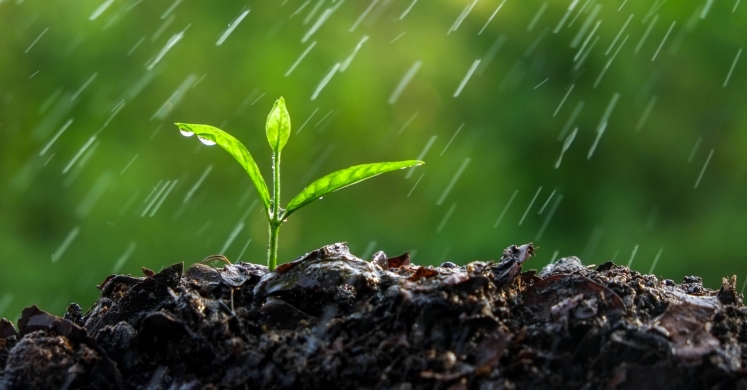Blog

#bioPGH Blog: The Scent of Earth After a Rain
 A resource of Biophilia: Pittsburgh, #bioPGH is a weekly blog and social media series that aims to encourage both children and adults to reconnect with nature and enjoy what each of our distinctive seasons has to offer. From the best times to plant seasonal flora and enjoy their peak blooms, to astronomical events and creatures to keep an eye and ear out for, Phipps will keep you in the know with what’s going on in our environment!
A resource of Biophilia: Pittsburgh, #bioPGH is a weekly blog and social media series that aims to encourage both children and adults to reconnect with nature and enjoy what each of our distinctive seasons has to offer. From the best times to plant seasonal flora and enjoy their peak blooms, to astronomical events and creatures to keep an eye and ear out for, Phipps will keep you in the know with what’s going on in our environment!
The pitter-pattering of rain drops slows. A peek out the window reveals gray clouds retreating into the horizon, and fresh sunlight spills onto the wet ground. If you step outside, you can breathe in that earthy scent—a smell that’s distinctive, peaceful, and familiar. The smell after a rain. What is that scent? you might wonder.
Why it’s a chemical from ubiquitous soil bacteria, of course!
We often don’t associate bacteria with something comforting like the smell of rain, but that recognizable, homelike scent was first isolated from a fascinating little bacterium called Streptomyces ceolicolor. More precisely, the smell is actually the compound geosmin, which is produced by Streptomyces along with some other related bacteria. The bacteria are always present in the soil, but when the ground is disturbed by rain (or by digging, as gardeners likely notice), the geosmin disperses into the air. And don’t worry, it is perfectly harmless — a part of our natural world.
The fact that bacteria in the dirt create the post-rain smell is interesting enough in itself, but Streptomyces stand out in another major way as well. Why are they so interesting? The answer to that is in their reproduction. They are quite strange in their world of fellow bacteria!
Most bacteria reproduce through “binary fission,” a process when one bacterial cell divides into two “daughter” cells. That is the most common method, but there are exceptions.
Streptomyces is one of those exceptions. Rather than simply divide into two new cells, Streptomyces exist as extensions of long thread-like filaments. When ready to reproduce, Streptomyces stretches new filaments called aerial hyphae above the ground. As the hyphae grow, they begin accumulating copies of their own bacterial DNA. Next, after a series of biological cues, these hyphae begin to divide into little compartments that hold their own complete set of DNA, or “genome.” Each of these compartments then forms its own new spore, ready to strike out on its own to grow into a new Streptomyces. It’s a pretty wild reproductive scheme!
In short, quirky little bacteria in the soil produce that lovely smell so many of us love after a rain. It just goes to show that nature is full of surprises and wonderfully complex diversity. Be sure to enjoy a bit of nature today, rain or shine!
Connecting to the Outdoors Tip: The next time it rains, go dig a bit at the soil in your own backyard or garden. Can you smell that scent more distinctively when you are closer to the ground or standing up? What happens if you sprinkle tap water onto the soil? Can you still smell “the rain?” You can also learn more about soil bacteria on the USDA’s web page and find different family activities on the Soil Science of America’s web page.
Continue the Conversation: Share your nature discoveries with our community by posting to Twitter and Instagram with hashtag #bioPGH, and R.S.V.P. to attend our next Biophilia: Pittsburgh meeting.
Resources:
Dagmara Jakimowicz & Gilles P. van Wezel. Cell Division and DNA segregation in Streptomyces: how to build a septum in the middle of nowhere? Molecular Microbiology. 2012.
Jiaoyang Jiang, Xiaofei He, David E Cane, Biosynthesis of the earthy odorant geosmin by a bifunctional Streptomyces coelicolor enzyme. Nature Chemical Biology. 2007.
Klas Flärdh & Mark J. Buttner, Streptomyces morphogenetics: dissecting differentiation in a filamentous bacterium. Nature Microbiology. 2009.
Anne Coyle. Brown Chemists Explain the Origin of Soil-Scented Geosmin.

